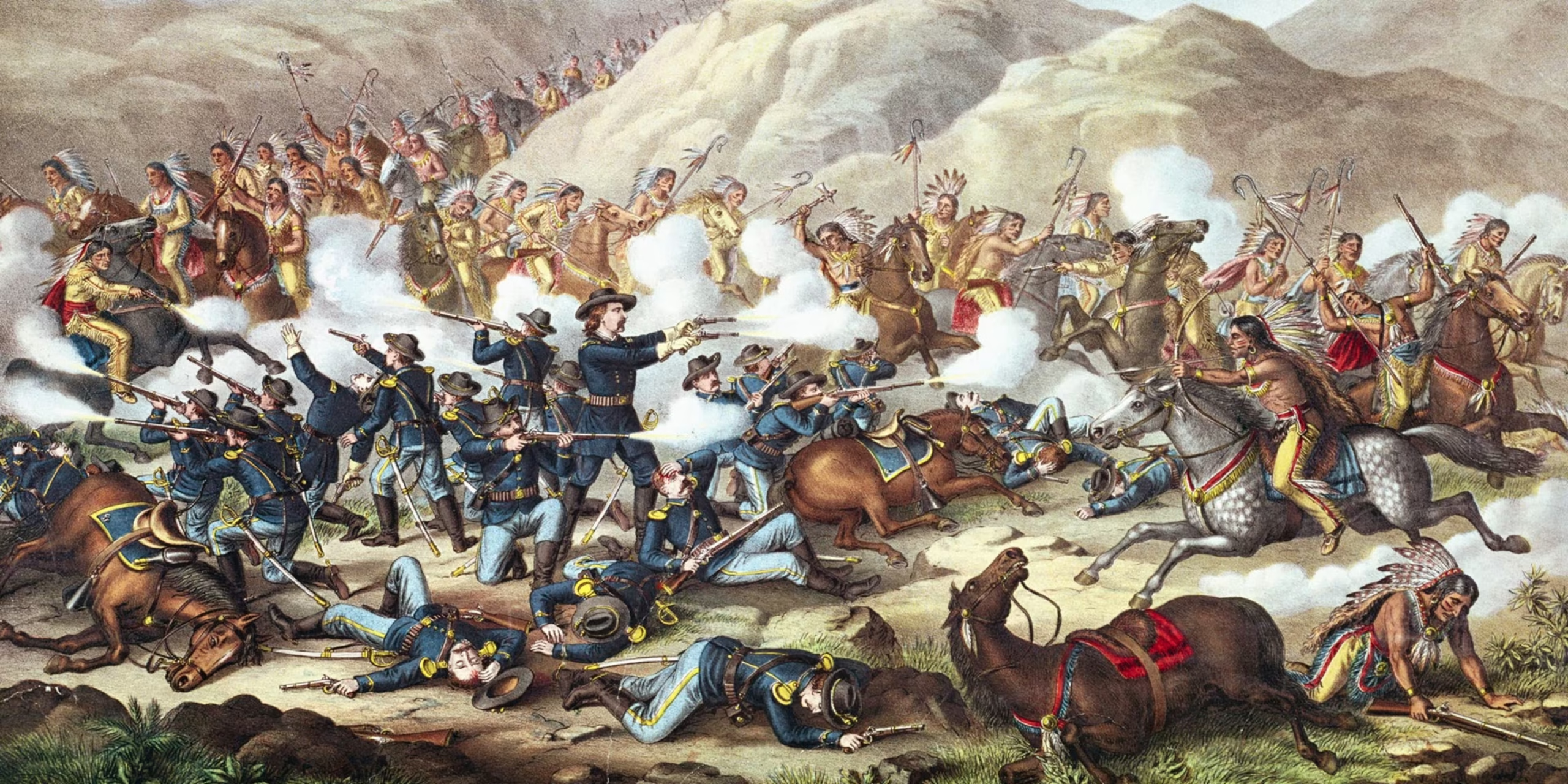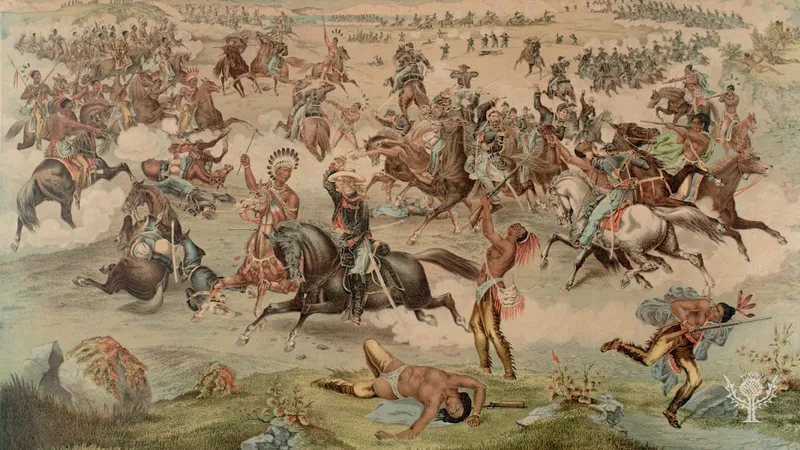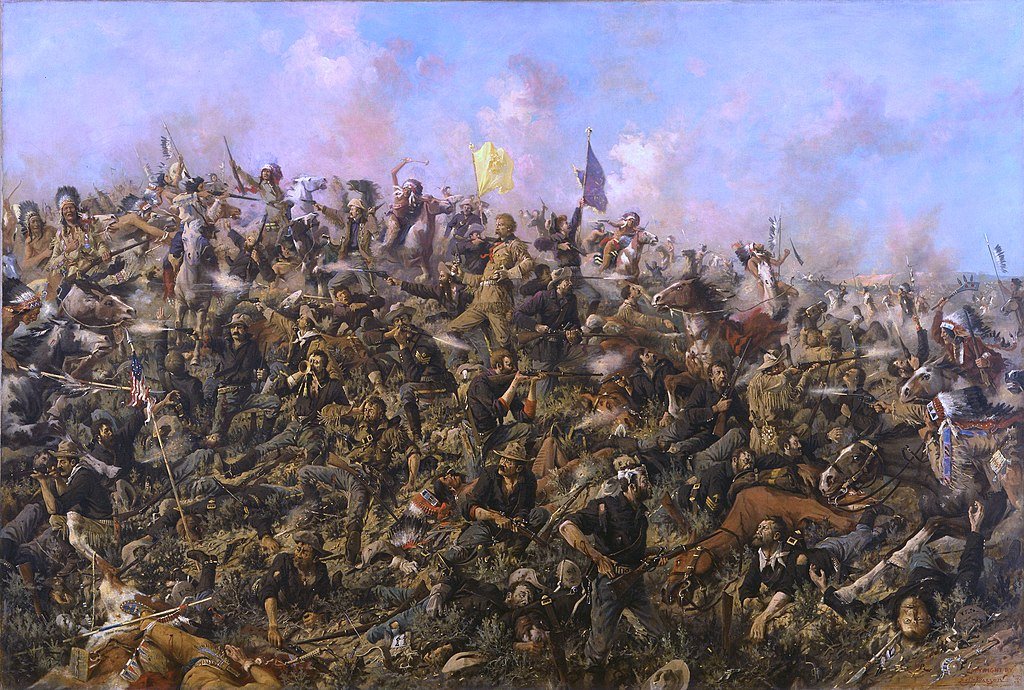Battle of the Little Bighorn: The Clash That Shook a Nation

Introduction
The Battle of the Little Bighorn, often referred to as Custer’s Last Stand, was a dramatic and historically significant armed conflict fought between the United States Army’s 7th Cavalry Regiment and a unified force of Lakota Sioux, Northern Cheyenne, and Arapaho warriors. Occurring on June 25–26, 1876, near the Little Bighorn River in eastern Montana Territory, the battle resulted in a resounding defeat of U.S. forces and became one of the most iconic episodes of the Great Sioux War of 1876. It not only marked a major Native American victory but also sealed the fate of Native independence on the Northern Plains.

Historical Context
U.S. Expansion and Treaty Violations
By the mid-19th century, U.S. expansionism had pushed Native American tribes onto limited reservation lands. In 1868, the Treaty of Fort Laramie had guaranteed the Lakota Sioux ownership of the Black Hills, an area in present-day South Dakota considered sacred ground by the Lakota people.
However, the discovery of gold in the Black Hills in 1874, following an expedition led by Lt. Colonel George Armstrong Custer, triggered a rush of miners and settlers, violating the treaty. The U.S. government attempted to buy the Black Hills, but the Lakota, led by spiritual leader Sitting Bull, refused.
In late 1875, the U.S. government issued an ultimatum: all Sioux and Cheyenne bands were to report to designated reservations by January 31, 1876, or be considered hostile. Many, including the followers of Sitting Bull and Crazy Horse, remained in the Powder River region, setting the stage for conflict.
The Campaign Begins
In the spring of 1876, the U.S. Army launched a three-pronged campaign to force the remaining Native Americans onto reservations. The plan involved:
- General George Crook, advancing from the south
- Colonel John Gibbon, moving from the west
- General Alfred Terry, with Custer and the 7th Cavalry, from the east
These columns aimed to converge near the Little Bighorn River. Custer, commanding over 600 men, was ordered to scout and pursue the Native forces in the region.
The Native American Camp
By June, thousands of Lakota, Cheyenne, and Arapaho had gathered in a large encampment on the Little Bighorn River. They were led by several prominent leaders:
- Sitting Bull – respected spiritual and political leader
- Crazy Horse – brilliant Oglala Lakota war chief
- Gall – fierce Hunkpapa warrior and tactician
- Two Moons – Cheyenne chief
The camp, composed of an estimated 7,000 to 8,000 people, included 1,500 to 2,500 warriors, making it one of the largest gatherings of Native resistance forces ever recorded.
The Battle: June 25–26, 1876
Custer Divides His Forces
On June 25, after locating the village, Custer decided to launch an immediate attack to prevent the Native forces from escaping. Without waiting for reinforcements from Terry or Gibbon, he divided his regiment into three battalions:
- Major Marcus Reno, with about 140 men
- Captain Frederick Benteen, with about 125 men
- Custer himself, with 210 men
Custer planned a surprise, multi-front assault to surround the village.
Reno’s Attack and Retreat
Reno attacked the southern end of the village but quickly encountered stiff resistance. Overwhelmed by sheer numbers and under heavy fire, Reno’s troops panicked and retreated into a timbered area before fleeing across the river and up a hill. Nearly a third of his men were killed or wounded during the retreat.
Custer’s Last Stand
Custer, meanwhile, advanced toward the village’s northern end, unaware of the massive force he was facing. His detachment of 210 men was quickly surrounded by thousands of warriors in a coordinated counterattack led by Crazy Horse and Gall. The exact sequence of events remains unclear, as no U.S. soldiers from Custer’s group survived, but archaeological evidence suggests fierce close-quarters fighting and a complete rout.
Custer and all his men were killed on Last Stand Hill, their bodies later found mutilated, stripped, or clustered together.
Benteen and Reno Hold Out
Benteen, who had been delayed by rough terrain and unclear orders, eventually linked up with Reno’s battered force on the hill. For nearly two days, they withstood multiple assaults until General Terry’s forces arrived on June 27, finding Custer’s battalion annihilated.
Casualties
- U.S. Forces: Approx. 268 killed, 55 wounded
- Native Americans: Estimates vary, but 40–100 warriors may have died, with more wounded
Aftermath and Consequences
Although a significant Native American victory, it was short-lived. Public outrage over the defeat led to a massive military response. The U.S. Army redoubled efforts to hunt down the Sioux and Cheyenne across the plains:
- The Great Sioux War intensified.
- Sitting Bull fled to Canada in 1877.
- Crazy Horse surrendered in 1877 and was killed later that year.
- By 1877, the Black Hills were forcibly annexed.
The defeat also led to Custer becoming a national legend, romanticized as a fallen hero despite criticism of his rash tactics and disobedience.
Legacy
Today, the site of the battle is preserved as the Little Bighorn Battlefield National Monument, honoring both the fallen U.S. soldiers and Native warriors. Memorials now include:
- Custer National Cemetery
- 7th Cavalry Memorial
- Indian Memorial (added in 2003 to honor Native resistance)
The battle has inspired books, films, and ongoing debates about frontier policy, Native sovereignty, and historical memory.
Significance
The Battle of the Little Bighorn symbolizes:
- The clash between Indigenous autonomy and U.S. expansion
- The tragedy of broken treaties and failed diplomacy
- The heroism and strategy of Native warriors defending their way of life
- The limits of military power when paired with cultural misunderstanding and arrogance
Though the Native Americans won the battle, they ultimately lost the war, as their lands, freedom, and way of life were soon crushed by relentless federal campaigns.

Conclusion
The Battle of the Little Bighorn remains one of the most powerful symbols of resistance in American history. It was a moment of triumph for Native tribes—against staggering odds—and a sobering reminder of the consequences of imperialism, broken promises, and cultural erasure. The legacy of the battle endures, not only as military history but as a critical chapter in the story of America itself.




